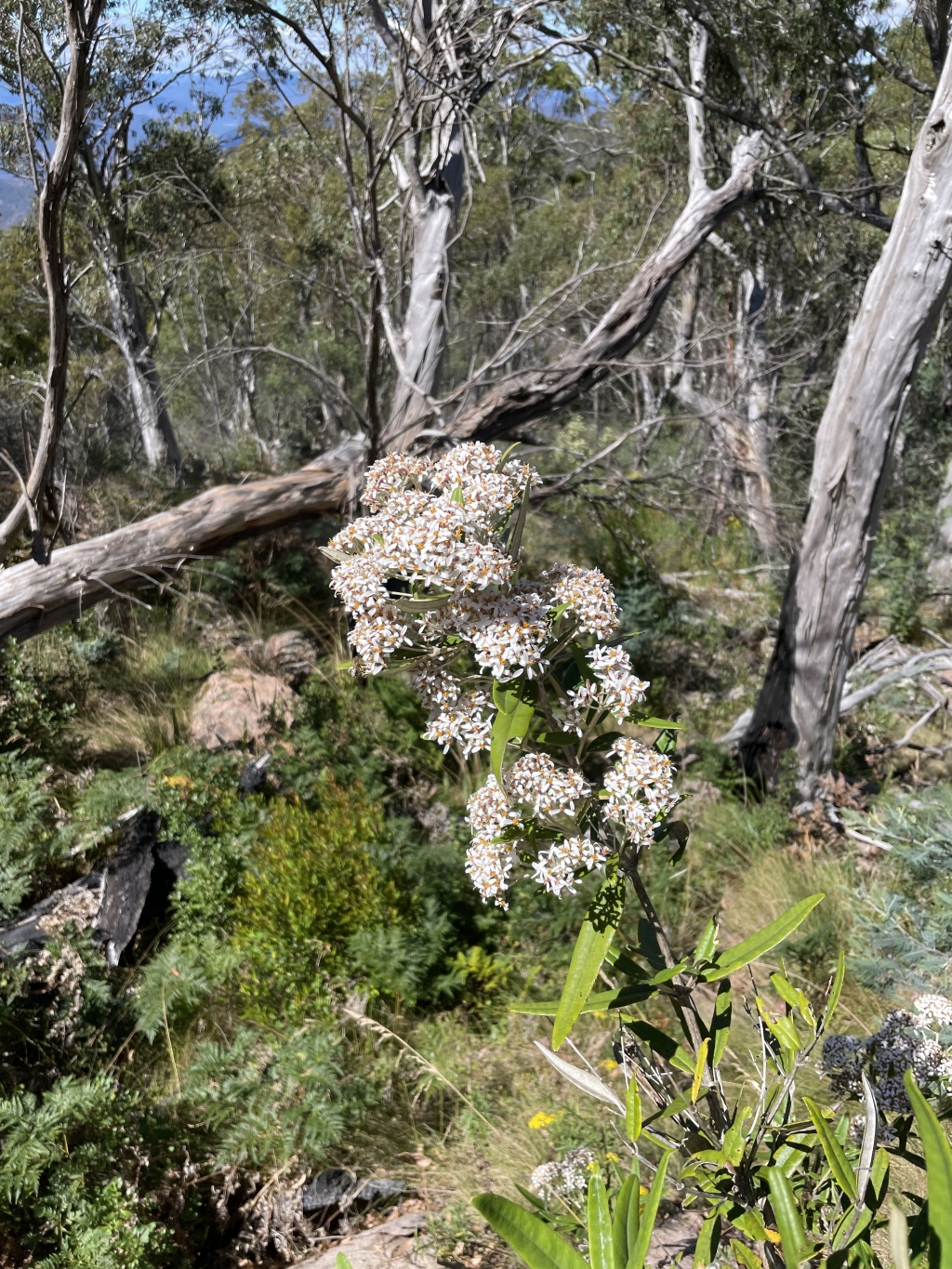Olearia aglossa
(Maiden & Betche) LanderShrub to c. 2.5 m high; branchlets closely tomentose with minute T-shaped hairs. Leaves opposite, narrow-ovate to lanceolate, (40–)55–90(–115) mm long, (10–)13–27(–35) mm wide, acute, flat, upper surface dark green, becoming glabrous, lower surface brownish or grey, densely tomentose; petiole to c. 12 mm long. Capitula 4–20 mm diam., in corymbs; peduncles to 25 mm long; involucre narrowly conical, 4.5–5.5 mm long; bracts 4–6-seriate, graduating, sericeous, margin membranous, sometimes fimbriate; outer (ray) florets 2–4, white, ligules 4.4–10 mm long; disc florets 2–4, yellow. Cypsela narrowly obovoid, 6–8-ribbed, 1.3–2 mm long, glabrous or sericeous near apex; pappus bristles sometimes pink, 5.5–6 mm long. Flowers Jan.–Mar.
EGU, MonT, HFE, VAlp. Also NSW. Apparently restricted in Victoria to the far Eastern Highlands where recorded in hills around Suggan Buggan, Gelantipy, the Cobberas, Mt. Tingaringy, and Bendoc where it grows in rocky slopes in dry sclerophyll forest.
A very rare but possibly overlooked species (particularly when not in flower) due to its close affinity to O. alpicola and O. megalophylla. It is somewhat intermediate between these two species. In leaf shape it closely resembles O. megalophylla, and when plants are sterile the two may only be distinguished by the close indumentum on the lower leaf surface of O. aglossa (see note under O. megalophylla for additional characters). It may be distinguished from O. alpicola by the fewer florets (both female and bisexual) and broader leaves. Some plants may further be distinguished by the pink pappus bristles, however, this character is inconsistent.
Walsh, N.G.; Lander, N.S. (1999). Olearia. In: Walsh, N.G.; Entwisle, T.J., Flora of Victoria Vol. 4, Cornaceae to Asteraceae, pp. 886–912. Inkata Press, Melbourne.
 Spinning
Spinning
